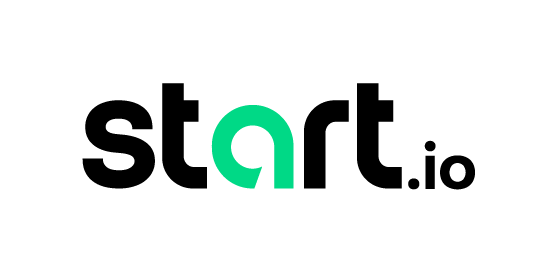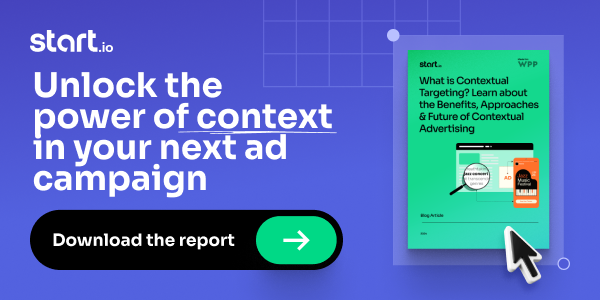The way we experience content will soon change.
One morning in the near future, you’ll open your favorite mobile app or visit your favorite website and face a sign-up wall that didn’t exist before. Targeted advertising is under threat.
The death of cookies on Chrome, and their Android equivalent – mobile advertising IDs – is inevitable, and if you work in ad tech or publishing, your company will be forced to reevaluate your best practices.
Given this fact, there are four paths forward for the ad tech and publishing industries, not to mention limited time for companies to choose one.
Path 1: Build Privacy Sandbox-centric ad targeting
For years, Google has been motivated, both internally and externally, to eliminate third-party cookies on desktop and mobile advertising IDs on Android.
Both cookies and MAIDs are open solutions to gathering consumer data. As soon as someone opens an Android app or lands on a webpage using Chrome, their activity gets added to their various consumer profiles, which exist in many forms in databases across the internet.
The Google Privacy Sandbox initiative will severely restrict access to consumer data. Instead, calculations about a user’s interests and behavior will happen on the device, which will offer up a limited number of consumer interests to advertisers.
For example, your Android phone might surface that you’ve recently become interested in fitness, running and luxury-car shopping. Ad tech platforms will need to use those hints to send you a relevant ad.
Google would like ad tech companies and publishers to trust that Privacy Sandbox will work as expected and that its privacy-centered interest graph technology won’t disrupt the multibillion-dollar programmatic advertising ecosystem too much.
Earlier this year, the Interactive Advertising Bureau published a comprehensive analysis of Google’s Privacy Sandbox and listed the dozens of advertising tactics that will be impossible post-cookie. Google’s response? Privacy Sandbox is primarily about improving consumer privacy. It isn’t designed to be a 1:1 replacement for third-party cookies.
The advantage of trusting Google is that Privacy Sandbox will be rolled out at scale. And once third-party cookies and then MAIDs disappear, billions of advertising impressions will begin flowing through Google’s interest graph.
Path 2: Contextual data tells you (almost) everything you need to know
As a thought exercise, imagine you’re given a single clue about someone and you need to make some educated guesses about who they are. That clue? The person is reading an article about a college basketball game happening later in the week.
You might use artificial intelligence to make a series of inferences, ranked from most to least likely: You’re confident, for example, that they’re a basketball fan, and somewhat confident that they’re male and earn more than $100,000 per year. It’s possible that the person is an alumnus of one of the two schools playing in the game.
Contextual targeting looks at the content a person is consuming in a given moment and uses that information to build a temporary consumer profile. As soon as they leave the website or close the app, that profile gets discarded.
Contextual targeting is future proof and privacy-centric out of the box.
Yet context is just one piece of the puzzle. Not everyone’s content consumption habits fit neatly into large statistical models.
Path 3: Publishers get into the data game
Today, if a publisher is large enough and has the necessary technology, they can segment their audience into distinct groups and allow advertisers to target those groups in their premium ad campaigns.
Hundreds of thousands of websites and mobile apps ask people to sign up before consuming their content.
Once you’re logged in, publishers can build a consumer profile based on your browsing habits, including who and what you interact with, and augment this with third-party data that they can match with your email address or other identifiers.
Post-cookie, I predict that publishers of all sizes will embrace sign-in environments. They’ll need technology to process the data that flows through their properties and map it back to predefined audience segments.
The benefit to seller-defined audiences is that publishers will have more control over the CPMs they’re able to command.
The drawback is the risk of sign-in fatigue among consumers and abandonment rates that outweigh the potential for higher CPMs.
Path 4: Alternative IDs save the day
Alternative IDs promise to help advertisers and publishers fill in the gaps in their consumer identity and audience segmentation. Once someone signs up for a publisher’s platform, their email address is encrypted and sent to an alternative ID provider, which can enhance the programmatic advertising served to that person with additional demographic information.
Alternative IDs are designed to be privacy-centric and can help publishers do some of the heavy lifting when it comes to consumer data and audience segmentation.
Additionally, publishers and advertisers can match their own first-party data with an alternative ID provider’s data in a clean room, further improving ad targeting.
Alternative IDs can augment existing, incomplete data sets, helping publishers command higher CPMs and allowing advertisers to run more targeted ad campaigns.
But the risk to publishers is vendor lock-in and the need to regularly test other forms of alternative IDs to stay competitive.
Which path should you choose?
After Google deprecates third-party cookies on Chrome and mobile advertising IDs on Android, the solution for advertisers and publishers will very likely be a combination of all four paths.
At Start.io, we believe that publishers hold the primary keys to success in the post-cookie world. Publishers know their audiences better than anyone and need the technology to segment their audiences at scale – through contextual targeting when users are signed out and seller-defined audiences when they’re signed in.
Alternative IDs are a powerful but optional tool in the publisher’s toolbox. Anecdotally, I’ve talked to publishers who have seen CPMs that are 30% to 100% higher when targeting people who have an identifier attached to them, versus people who don’t.
Ultimately, we know we’ll need to rely on the accuracy of Google’s new, privacy-centric identity graph, which will be attached to billions of programmatic ad requests in the future.
In the coming cookiepocolypse, it’s clear that Google will offer one solution out of many, rather than the single solution we rely on for everything.
For more articles featuring Gil Dudkiewicz, click here.

















